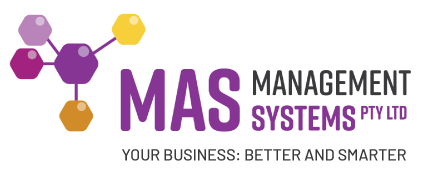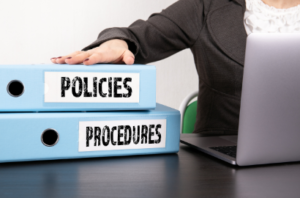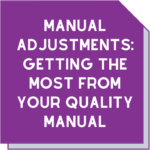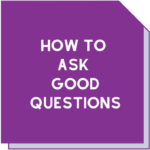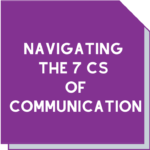7 Tips for Writing Clear, Compliant Lab Documentation

Good lab documentation isn’t just about ticking compliance boxes—it’s essential for reliable operations, successful audits, and consistent quality. Whether you’re striving for ISO/IEC 17025 or ISO 15189 accreditation, or are already in the accreditation world, clear, actionable documentation sets your laboratory apart.
However writing clear, concise policies and procedures can be challenging. Labs often produce complicated documents filled with jargon, making them difficult for users—and auditors—to navigate.
Here’s how to simplify your approach, streamline your documents, and enhance their usability and compliance.
Why Clear Documentation Matters
Quality lab documents communicate essential information clearly, reduce errors, provide training materials, and offer robust evidence during audits. Effective documentation helps your team understand processes and appreciate the importance of their role in the bigger picture.
But, knowing how much or how little you can get away with in your documented system can be tricky. Especially when you’re interacting with an external assessor.
Tips for Writing Great Policies and Procedures
- Start with a Clear Structure

Start by understanding what type of document you are writing. If it’s a Policy, then it’s all about broad direction and what your lab does. If it’s a Procedure, it’s about how to perform the activity.
A standardised template with clearly defined sections such as Purpose, Scope, Responsibilities, Procedures, References, and Revision History, enhances readability and consistency. Clearly organised headings, step-by-step instructions, and numbered lists simplify complex procedures.
-
Understand Your Audience
Write with the reader in mind—your lab staff, your customers or whoever else you know will be reading the document.
Use familiar terms, avoid jargon, and define technical language clearly. Consider their experience and tailor your communication accordingly, making documents relevant and easy to understand.
-
Keep it Simple with Plain Language
Plain language is key:
- Use everyday words rather than technical jargon
- Keep sentences concise (ideally 15-20 words)
- Choose active voice (“Calibrate the instrument” instead of “The instrument should be calibrated”)
- Use verbs rather than abstract nouns (“identify” instead of “identification”)
-
Enhance Usability
Ensure documentation is readily accessible where it’s needed AND that the content is also usable.
When it comes to physical accessibility, consider practical formats like laminated procedures at workstations or digital copies available via tablets.
Think about their preferred way of taking information in and processing it. Not everybody responds well to a slab of text. Then, test drafts with real users to verify clarity and usability.
-
Implement Rigorous Document Control
Document control is all about ensuring that the right person can access the right information, when and where they need it.
That means it’s important to assign unique document identifiers and version numbers or dates. It’s also important to clearly label obsolete documents to prevent confusion.
-
Leverage Digital Tools
There are some helpful tools in word processing apps. They check on spelling, grammar and accessibility issues. They can also help refine the language of the document.
The world is awash with generative AI apps. We see this as a great productivity opportunity tool and creating even greater accessibility to information.
But, there is a limit to these capabilities. It’s important to think about the skill of the Large Language Model – they are not necessarily experts. Issues of Confidentiality can also be a consideration with your documents.
Don’t forget about other digital solutions to streamline document development:
- Document Management Systems (eg SharePoint, MasterControl, M-Files)
- Collaborative platforms (eg Google Docs, MS Teams)
- Workflow management (DocuSign, Docuphase, Nintex)
Use PDF files for distribution to protect against unauthorised editing, and restrict editable versions.
-
Aligning with ISO Requirements
Each document should explicitly meet ISO/IEC 17025, ISO 15189 or ISO/IEC 17020 requirements by covering:
- Clear purpose, scope, and responsibilities
- Detailed procedures, including quality checks
- Cross-references to other essential documents, training, or records
- Guidance for handling deviations or unexpected results
Document competency requirements to ensure only qualified staff carry out specific procedures.
Training and Review
Effective documents support ongoing training and maintain organisational knowledge. Regular document reviews (at least annually) ensure accuracy, relevance, and compliance. Engage your team in the review process—they’re your best critics.
Next Steps
 Struggling to put these tips into action? Our “From Dot Points to Documents” training on Thursday 18 May can help your team master the art of clear, compliant lab documentation. Contact us today to learn more! And look out for our upcoming Skill Shot on Document Mastery 101!
Struggling to put these tips into action? Our “From Dot Points to Documents” training on Thursday 18 May can help your team master the art of clear, compliant lab documentation. Contact us today to learn more! And look out for our upcoming Skill Shot on Document Mastery 101!
Having a clear structure and strategy makes it easier to create documents that truly benefit your organisation. But sometimes there just aren’t enough hours in the day to put it into practice. If you’re pressed for time or unsure how to begin documenting your systems, contact us today—let us take the stress out of your lab documentation!
At MAS Management Systems, we leverage our extensive expertise in writing and reviewing procedures and policies to help labs like yours develop practical, high-quality management documents.
Clear documentation isn’t just good practice—it’s critical to your lab’s success. Follow these principles, and your policies and procedures will be clear, compliant, and compelling to everyone who uses them.
Email info@masmanagementsystems.com.au or phone Maree on 0411 540 709 if you need support.
Remember, you don’t have to do this alone!
